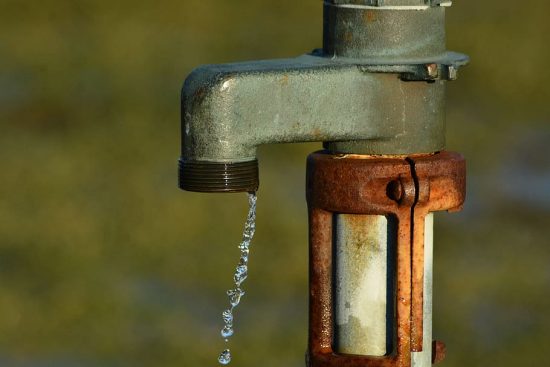Chilly fall temperatures can come quickly in California. The cooler night temperatures are a nice relief from the California summer heat but also serve as a warning to get your home ready for winter which is right around the corner. Fall temperatures are a reminder that when winter arrives it can be sudden and often leave homeowners unprepared for the troubles that come with extreme cold. A few simple plumbing preparations in the fall will help prevent costly repairs through the cold winter months.
Tips:
1. Outdoor Water Hoses

Drain and disconnect outside water hoses. Water hoses left connected during colder temperatures will allow water inside to freeze and expand. This expansion can cause faucets and connected pipes inside your home to freeze and break.
2. Outdoor Faucets
After removing the hose, check the faucet for any leaks, drips or cracks. If any of your outdoor faucets leak or drip, fall is the time to fix them before freezing temperatures arrive. A leaking faucet can lead to frozen pipes where water pressure builds and causes cracks. Even a little leak or crack can unleash enough water to cause serious damage or flooding. Once your outdoor faucets are fully fixed, cover and insulate the faucets with a Styrofoam insulation kit.
3. Interior Shut-Off
Your home may be equipped with an interior shut-off valve that connects to outside faucets or plumbing. Close the shutoff and drain water from outside lines to prevent pipes from freezing.
4. Insulate Pipes
If you have pipes housed in non-heated areas, such as the garage or crawl space, it is crucial to insulate the pipes to prevent freezing and bursting. Apply heat tape or thermostat-controlled heat cables around pipes that are exposed to elements and prone to freezing.
5. Seal Gaps
It is common for gaps to occur between the walls and pipes in areas where pipes enter your home. These gaps allow for cold air penetration, which could have a negative effect on your utility bill and lead to pipes freezing. While you are spending time checking the areas where pipes enter your home to seal the gaps, also check for leaks around doors and windows. Use weather stripping, caulking, and insulation to fill any gaps.
6. Sump Pumps
If your sump pump is exposed to extreme temperatures, make sure it is insulated and clean before the cold winter months. By keeping your sump pump insulated you will reduce the chance of it freezing leaving it unable to operate efficiently.
7. Water Heater
- Your water heater works much harder to provide the same level of hot water during the winter months. Flush your water heater to remove sediment build up, which causes corrosion and shortens the life span and heating efficiency. Do so by connecting a hose to the faucet at the base of the water heater and draining several gallons of water into a nearby drain. Check your water heater manufacturer’s website for instructions on how to flush your specific make and model water heater.
- Test your water heater’s pressure relief valve. DANGER: water is extremely hot! Lift up on the lever and let it snap back. The valve should allow a short burst of hot water into the drainpipe. If this does not occur, call a professional plumber to have a new valve installed and tested. Warning: if our water heater is more than five years old and the pressure relief valve has never been tested, consult a plumber before testing relief valve yourself. Old relief valves can break causing a water heater leak.
- Check temperature setting on your water heater’s thermostat. Set at 120℉ for optimum performance during winter months.
Note: These plumbing tips are not for vacation homes but rather homes occupied during winter months. If you need help to winterize a vacation property or home that will not be occupied during the winter months, seek professional help for information on how to do so correctly. If a winter home is not taken care of before leaving, there can be major damage due to pipe freezes and other issues caused by extreme temperatures.